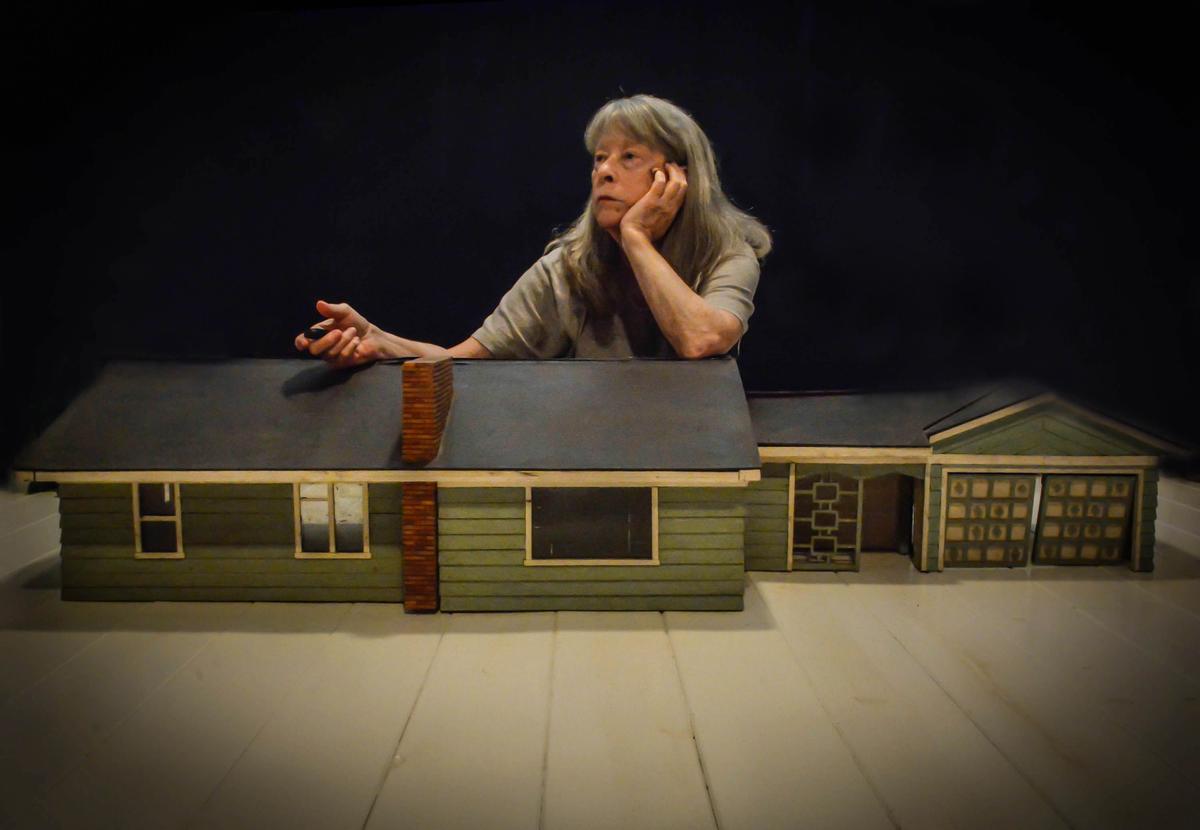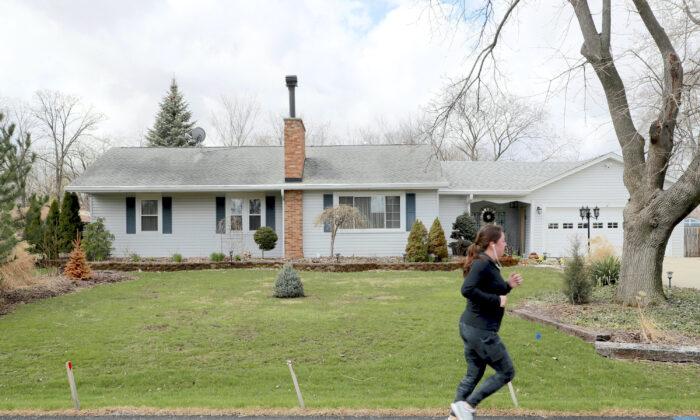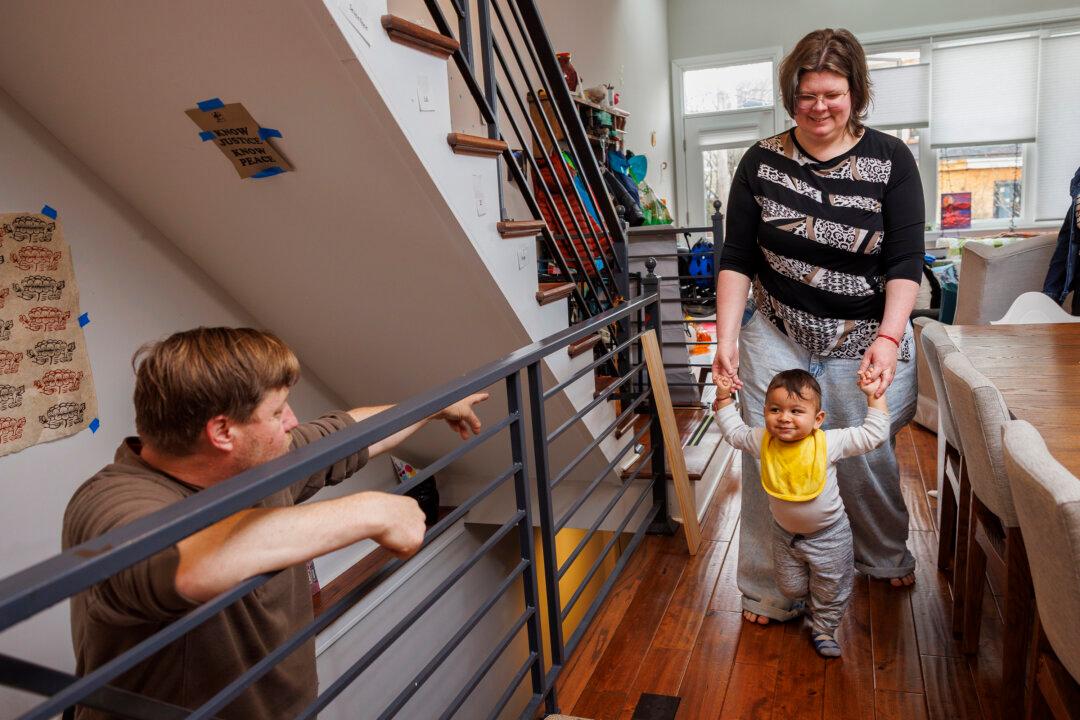BENSENVILLE, Ill. -- A lot of people remember their childhoods through photo albums or a cherished toy. Penny Parrish’s keepsake is rather more substantial — and that has become a problem.
A few years after her family moved into the Bensenville ranch-style house her father and a friend built with their own hands, her dad made a replica of the home as a dollhouse for Parrish and her younger sister.
It was scrupulously faithful to the real thing — he carved the chimney brick by brick and added imitation shrubbery on the artificial lawn — and it was massive, covering most of an 4-by-8 foot sheet of plywood.
Parrish long ago moved away from Bensenville, but for decades she has kept the dollhouse as a memento of those happy midcentury days.
“I couldn’t take the big house with me, but I could always take the little one to remind me of our time in Bensenville,” she said.
But now she is 75, and she wonders what will become of the dollhouse that occupies a room in her Fredericksburg, Virginia, home. She has no children to whom she can leave it, her sister doesn’t have room for it, and though she believes it should be preserved as a piece of postwar suburban history, she’s found no takers among Illinois historical societies.
Such is the limbo that often awaits “granddaddy houses,” as Lori Kagan-Moore of the Great American Dollhouse Museum calls them. These dollhouses, built by family members, tend to lack the artistry or meticulous detail that would make them collectible, she said, though she gets donation inquires almost every week.

“Half an hour ago, I responded to one of those letters,” she said. “I try to tell them what is really nice about the house, but we usually can’t take them.”
Parrish was 5 when her family moved in the early 1950s from Chicago’s North Side to a new subdivision in the farmland near Bensenville.
Her dad, Jess Parrish, was an Army veteran and IBM service engineer who had learned carpentry and other construction skills from his father, and he built the home with a pal. According to a ledger in which Jess Parrish and his wife, Jean. logged every expense, the entire job cost just over $11,000.
The three-bedroom, one-bath house had a fireplace, radiant heat and a clothesline in the backyard, fitting right into the burgeoning neighborhood. The streets teemed with children her age, Parrish said, and families grew so close they vacationed together and kept in touch even after they moved away.
It was part of the Greatest Generation’s suburban migration, which saw Bensenville’s population more than double in a decade. Nancy Flannery of the Wheaton Historic Commission said many of the houses that went up in the DuPage County suburbs during that time were similar to the one the Parrishes built, optimized for growing families.
“I think the architecture reflected a certain value system that was very appealing to men and women who had been in World War II,” she said. “ ... (It provided) not a luxurious place, but a place a man and woman could be proud of, where they could raise their children, have good schools and a lovely home.”
When Parrish was 9, her father surprised her and her sister, Deb, at Christmas with a replica version of the house. It was faithful all the way down to the decorative screen on the front porch, and the roof could be removed so the girls could set their Tiny Tears dolls inside.
“I remember him being very proud of what he had done,” Deb Parrish recalled. “He was not a very talkative guy, but you could tell he admired his work, both in the big house and the little house.”
Penny Parrish stayed at home through college, then left for a job in Florida. The dollhouse remained with her parents even after they left their Bensenville home and moved to Michigan.
“When they sold the house, I told them they could not pitch the dollhouse,” Parrish said. “So they hauled it up to Michigan and it sat in the rafters of the garage there for a long time. When they sold that house in the 1990s, that’s when I took it.”
She has had the dollhouse ever since — she had to take it off the plywood in order to move it — but with no heirs to claim it when she’s gone, she has tried to interest museums and historical societies.
“What most people have told me is that they think it’s a fascinating story and piece of history, but they either don’t have room for it or COVID has made their staffing so low they just can’t deal with it,” she said.
The Bensenville home her father built still stands, and its appearance isn’t far removed from its original state. Parrish said she hasn’t reached out to the current owners, but after she’s gone, she plans to have the executor of her estate inquire about whether they might want the dollhouse.
And if they don’t?
“I won’t be around at that point,” she said. “At least I wouldn’t know about it.”
A Tribune reporter stopped by the house this week, but the resident didn’t respond to an interview request.
Kagan-Moore said the scale of the replica makes it particularly hard to donate. But in an age where children rarely get handmade toys — or toys of any sort, given the popularity of video games and other digital devices — she understands its enduring value.
“It (tells) the story of that family and those relationships and those children who loved it,” she said. “I think it’s sad when that sort of thing is lost.”
For now, though, its presence remains a comfort. Not long after the pandemic began, Parrish took a photographic self-portrait with the dollhouse and slipped into a reverie about all it had meant.
“I thought of my past, my family,” she said. “This was a dollhouse my dad made. It just (conjured up) memories, all kinds of memories.”
©2022 Chicago Tribune. Visit at chicagotribune.com. Distributed by Tribune Content Agency, LLC.






